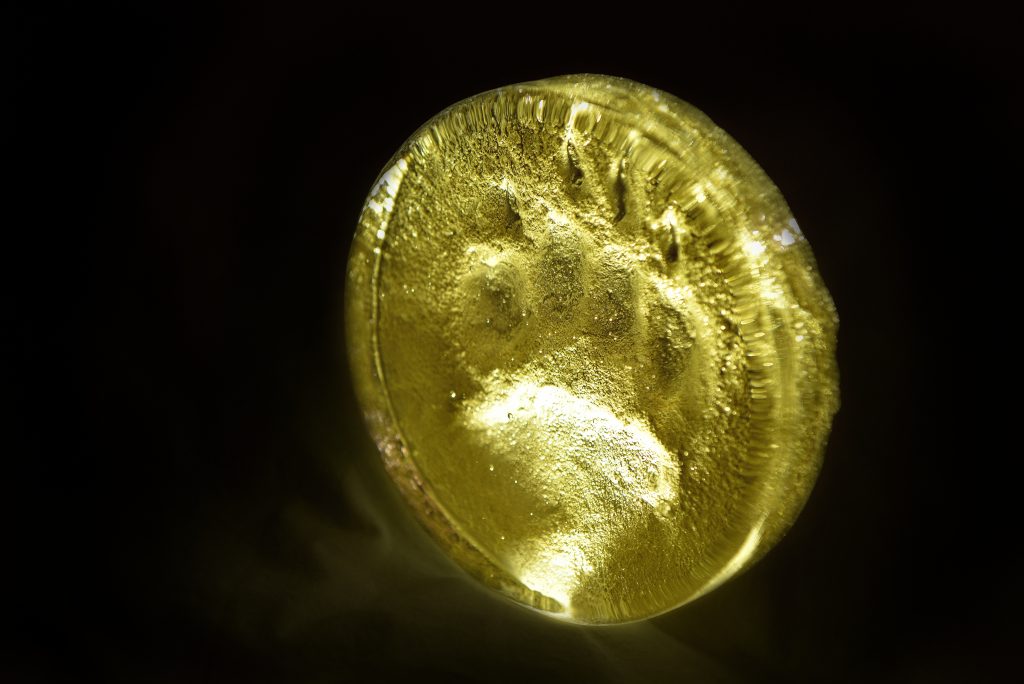
Tracking Histories I
January 2020
Sand casted glass – paw print of a wolf from Kananaskis Country, AB, Canada.

This series was as much about the process as it was the result. My grandfather was a ceramicist and a hunter, among other things. During his time as a potter, he would always be sure to bring a bag of plaster with him into the back country while hunting – this way, if he found a footprint in the mud, he could use water from a near by source and cast the print. He would bring these casts home and press them into his clay. Unfortunately, my grandfather has long since retired from pottery (he’s a lapidary gentlemen now). One winter day, while helping my grandparents clean out his old pottery equipment, we found a shoe box of the original casts at the very back of their storeroom. I inherited them that day. To commemorate the history of the Canadian Rockies and the wildlife within it, as well as my own family history of creating based on nature, I began casting the prints in glass – both the casts he provided me and ones of my own. They are displayed illuminated as a history of my land, and my family and the impact they have had on each other.
The process of sand casting involves pressing the plaster replica into a box of a prepared sand mixture. A metal dam is placed around the area you wish to capture and molten glass is poured into the area, capturing the print and the texture of the ground perfectly. Just as my grandfather poured his medium into the prints, I pour mine into the prints he’s left me.

